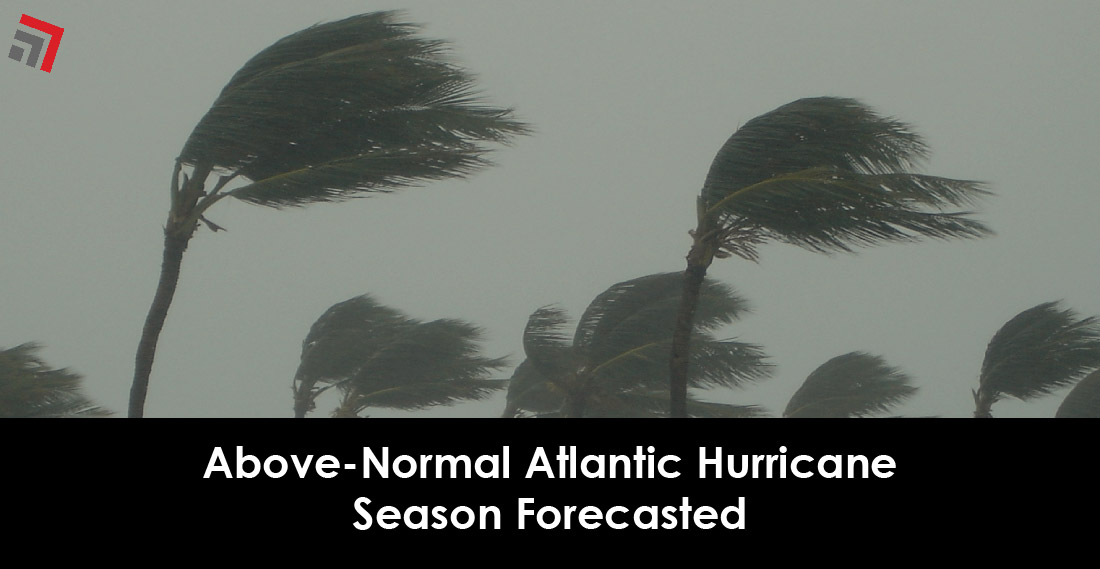Government meteorologists have laid out their predictions for the 2024 Atlantic hurricane season.
The National Oceanic and Atmospheric Administration (NOAA)’s Climate Prediction Center are forecasting “above-normal” hurricane activity in the Atlantic Ocean over the course of this year’s season which spans from Jun. 1 to Nov. 30.
NOAA predicts an 85 percent chance of an “above-normal” season, a 10 percent chance of a “near-normal” season, and a 5 percent chance of a “below-normal” season.
NOAA’s proclamation of “above-normal” hurricane activity translates to a forecasted range of 17 to 25 named storms (winds of 39mph or higher) occurring through the upcoming season. Of those predicted totals, 8 to 13 are forecasted to become hurricanes (winds of 74 mph or higher), including 4 to 7 major hurricanes (category 3, 4, or 5 with winds higher than 111 mph).
NOAA meteorologists have 70 percent confidence in these ranges.
Favorable conditions for more hurricanes this year
Similar to last year’s hurricane season, in which it was upgraded to an “above-normal” forecast in August, NOAA forecasters are expecting key factors to contribute to a potent campaign of storms in 2024.
This year, they accredit several reasons: near-record warm water temperatures in the Atlantic Ocean; development of La Niña conditions in the Pacific Ocean; and, reduced Atlantic trade winds and less wind shear. According to NOAA, these are favorable conditions for tropical storm formation.
When it comes to the prodding of storms in the Atlantic, La Niña is favorably demonstrative, essentially the opposite of El Niño, which was the marquee headline of last year’s climate chronicles.
La Niña is an irregular weather pattern characterized by the cooling of sea surface temperatures in the Pacific Ocean, the opposite of what El Niño patterns do (warm up the Pacific’s surface). While the latter typically suppresses storm formation in the Atlantic Ocean, La Niña’s cooling over the Pacific enhances hurricane activity in these waters. During a La Niña period, more hurricanes usually form in the Atlantic Ocean due to weaker vertical wind shear and trade winds, as well as atmospheric instability.
As one of the strongest El Niños ever observed draws to a close, NOAA forecasters are predicting a quick transition to La Niña conditions, a sort of weather whiplash that could further spur on Atlantic storm formation.
Stakeholders prepare for potential market impact
While everyone who lives near the Atlantic and Gulf coasts are cautious ahead of the annual hurricane season, in the scope of transportation, supply chain stakeholders also worry about how the next big storm can disrupt their operations.
From seaport authorities to trucking companies, all corners of the transportation sector brace for the upcoming season. If a hurricane is on the radar, preparations and alterations to the market occur in the weeks leading up to the severe weather event.
It is common for there to be a significant demand surge from shippers to get their freight moving before a major storm system makes landfall. As a result, rates become strikingly volatile, while capacity lurches. Generally speaking, a powerful hurricane trumps any other supply chain event when it comes to its short-term impact on the trucking market. This is especially true if a storm is poised to hit larger U.S. cities, the likes of which are close quarters within the densely populated Atlantic and Gulf coasts.
Final Thoughts
While forecasting a storm’s presence is reliable, a hurricane’s true power, especially when it makes landfall, is difficult for forecasters to predict. Public officials implore trucking companies and their professional truck driver-employees to heed updated forecasts and advisories, especially if a storm system is forming in the Atlantic Ocean. NOAA provides a hurricane tracking model on its website.
NOAA’s Climate Prediction Center will update the 2024 Atlantic seasonal outlook in early August if necessary. The infamous “peak” of hurricane season occurs between mid-August and mid-October.
Click here to read NOAA’s hurricane outlook news release, published May 23.
Contact one of our team members if you have any questions regarding this topic or any others in cross-border logistics.
More blogs similar to this:



Recent Comments